Foggia, the vibrant heart of northern Puglia, is a city that embodies the richness and vitality of southern Italy. Located in the vast and fertile Tavoliere delle Puglie plain, Foggia stretches over a territory distinguished by its expanse and natural beauty. This strategic location, about 120 kilometers north of Bari and a short distance from the Adriatic Sea, makes it an important crossroads for the region, a place where history, culture, and agriculture intertwine in a captivating blend of tradition and modernity.
The city is characterized by a history that stretches back centuries, as evidenced by its architecture and historical monuments.
Foggia is not only a cultural hub but also a thriving agricultural epicenter. The Tavoliere plain, with its fertile soil, is ideal for growing wheat, olive oil, and vegetables. This vast rural landscape, with its golden fields and ancient olive groves, contributes to making Foggian cuisine particularly flavorful and authentic.
Moreover, Foggia’s proximity to the Gargano National Park offers a unique opportunity to explore breathtaking natural landscapes, from lush forests to rugged coastlines, further enriching the experience of visitors to this fascinating city.
What to See in Foggia
Here are some of the main attractions in the city:
- Cathedral of Foggia
- Teatro Giordano
- Civic Museum
- Piazza Cavour
- Palazzo Dogana
- Chiesa delle Croci
- Church of San Tommaso
- Parco del Boschetto
- Piazza Umberto Giordano
- Villa Comunale Karol Wojtyla
Cathedral of Foggia
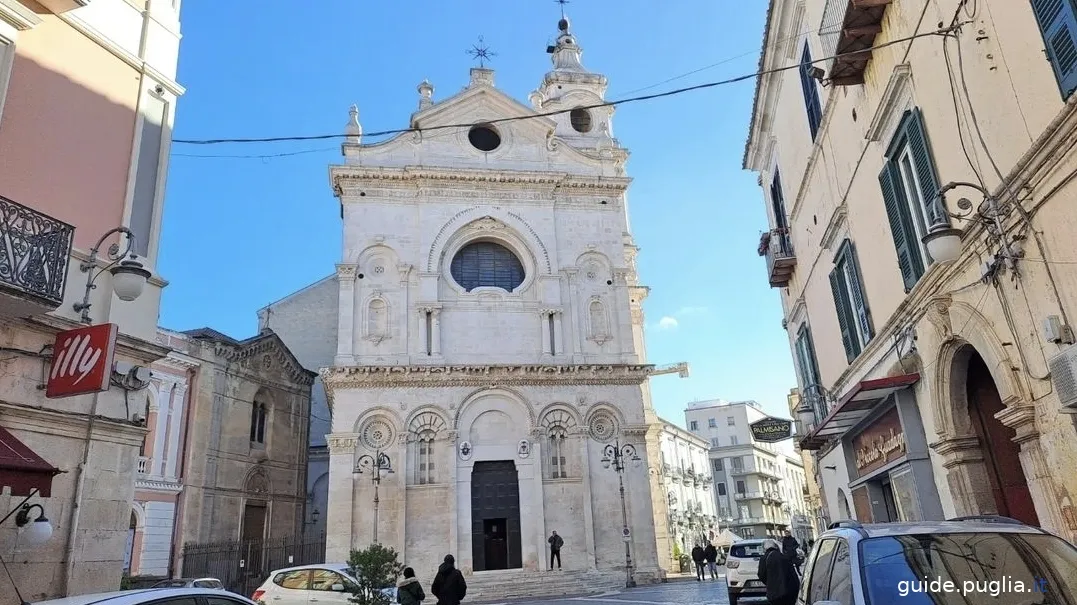
The Cathedral of Foggia is located in the historic center of the city, precisely in Piazza Cattedrale. It is situated in a strategic position that makes it easily accessible to both residents and tourists, and it is within walking distance from most central points of the city.
The Cathedral of Foggia, dedicated to Santa Maria Assunta, is a notable example of religious architecture that combines elements of Romanesque and Gothic styles.
Originally built in 1140, the building has undergone numerous modifications and reconstructions over the centuries due to damage caused by earthquakes and conflicts. Among these events, the 1731 earthquake was particularly devastating, necessitating a significant reconstruction of the entire structure.
Architecture and Artworks
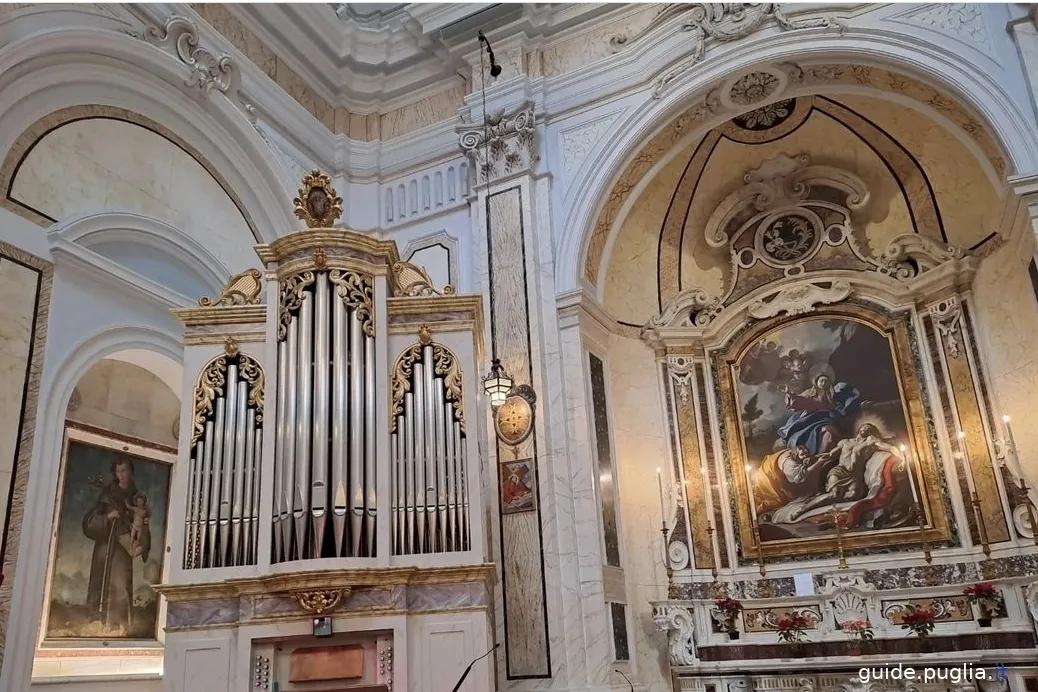
- Facade: The cathedral's facade is sober yet elegant, with a central portal enriched with sculptural decorations. Gothic details are evident in its arches and window arrangement.
- Interior: The interior of the cathedral features a spacious and well-lit central nave, with ribbed vaults and decorations dating from various periods of its history. The main altar houses an important altarpiece dedicated to the Madonna Assunta.
- Frescoes and Decorations: Inside, visitors can admire frescoes and decorations from various periods of the church's renovations. Some of these frescoes are particularly valuable and well-preserved.
- Cathedral Treasure: The cathedral also houses a treasure of sacred objects and relics of great historical and artistic value.
Opening Hours
The opening hours of the Cathedral of Foggia may vary depending on the day of the week and scheduled religious activities. However, generally:
Monday to Saturday: The cathedral is usually open to the public from 7:00 AM to 1:00 PM and from 4:00 PM to 7:00 PM.
Sunday: Hours may be similar, with special openings for liturgical celebrations.
Note: Opening hours may change during holidays or special events, so it is always a good idea to check the updated hours with the parish office or the official website of the cathedral before planning a visit.
Teatro Giordano
The Teatro Giordano in Foggia is an important cultural center and one of the most significant historic theaters in Puglia.
The theater was inaugurated on October 14, 1894, and is dedicated to the composer Umberto Giordano, originally from Foggia and famous for works such as Andrea Chénier and Fedora. The choice of name reflects Giordano's importance to the city and his influence on Italian operatic music.
Over the years, the theater has undergone various restorations and modernization efforts to preserve its historical beauty and adapt it to contemporary needs. These works have included improvements to the facilities and technological updates to ensure a high-quality experience for both audiences and artists.
Architecture
Exterior: The facade of Teatro Giordano features a neoclassical style, with columns and architectural details that give it an elegant and majestic appearance. The main entrance is adorned with decorations reminiscent of the opulence of 19th-century theaters.
Interior: The interior of the theater is equally impressive. The main hall is decorated with stuccoes and frescoes reflecting the opulence of the era of its construction. The stage, spacious and well-equipped, is suitable for theatrical performances, concerts, and operas.
Cultural Activities
Teatro Giordano is a landmark for Foggia's cultural life and hosts a wide range of events, including:
Theatrical Performances: Comedies, dramas, and theatrical performances by local and national companies.
Concerts: Musical performances ranging from classical to contemporary music.
Opera Productions: Opera performances, honoring Umberto Giordano's musical tradition.
Program
The opening hours and programming of Teatro Giordano vary depending on the events and performances scheduled. The theater season typically follows an annual calendar with scheduled events that can be consulted on the theater's website or at the information office.
Tickets and Reservations
Tickets for performances can be purchased online, at the theater's box office, or through authorized sales points. It is advisable to book in advance for popular events or shows with high attendance.
Guided Tours
It is possible to visit Teatro Giordano even if you do not attend scheduled events.
Guided tours of Teatro Giordano can be arranged by reservation, and are often available during the week and on weekends, depending on the theater’s availability and schedule.
During these tours, participants can explore various areas of the theater, including the main hall, stage, loggias, and backstage areas.
During the tour, participants receive detailed information about the theater's history and architecture, discovering curiosities and anecdotes related to its construction and the city's cultural life. Guided tours are an excellent opportunity to appreciate the theater's beauty and understand its historical and cultural significance, even if you are not attending a performance.
Reservation
To participate in a guided tour, it is generally necessary to book in advance. Reservations can be made by contacting the theater’s box office directly, the official website of the theater, or through other contact methods indicated by the managing entity.
Hours and Costs
Guided tours may have a cost, which can vary depending on the duration and type of tour offered.
The hours for guided tours depend on the theater's schedule and staff availability.
Civic Museum of Foggia
The Civic Museum of Foggia is one of the city's main cultural institutions, dedicated to preserving and enhancing the local historical and artistic heritage. Located in the heart of Foggia, the museum offers a fascinating overview of the region's history, art, and traditions.
It is situated in Piazza del Lago, in a historic building with a central location, making it easily accessible to visitors and well-connected to other tourist attractions in Foggia.
History and Architecture of the Building
The building housing the museum is itself an important example of historical architecture. Originally used for public and institutional purposes, it was transformed into a museum to collect and showcase the cultural treasures of the city and the province.
Collections and Exhibitions
- Archaeological Finds
Inside its halls, the museum features an archaeological collection that captivates with its ancient treasures. Prehistoric and protohistoric objects, such as tools and artifacts from the Neolithic and Copper Ages, narrate the stories of the early communities that inhabited the vast Tavoliere delle Puglie plain.
This section of the museum is enriched with Roman and medieval finds, including finely decorated ceramics, coins, and everyday tools that offer a glimpse into the daily life of ancient civilizations that inhabited this land. Special attention is given to funerary items, providing an intriguing view of the funerary practices and beliefs of the time.
- Art and Sculpture
The museum's art and sculpture collection is equally rich and varied. Among the exhibited works, you can admire ancient and medieval sculptures reflecting the artistic influences of the era, from the intricate details of religious statues to representations of historical figures.
In addition, the collection includes modern sculptures, offering a look at the latest artistic trends and works by contemporary sculptors. The paintings in the museum range from sacred to secular art, featuring works by local and national artists that illustrate both the richness of religious tradition and more modern and innovative representations of reality.
- Sacred Art
Another section of the museum is dedicated to sacred art, featuring a collection of liturgical objects including chalices, crosses, and sacred vestments, all originating from the historic churches and convents of Foggia and its surroundings.
These pieces not only embellish the exhibition halls with their elegance and richness but also provide a profound reflection on the region's religious and spiritual traditions. The displayed altars and relics further expand this narrative, allowing visitors to explore sacred art through the ages.
- Local History and Traditions
The museum is also a custodian of local traditions and history. Historical documents and period photographs collected in its halls provide a valuable snapshot of daily life in Foggia and its surroundings over the centuries.
Period objects, traditional clothing, and work tools tell the stories of past generations, their habits, and their innovations. These artifacts are complemented by temporary exhibitions that may cover various aspects of local history and culture, offering visitors a continuously new and stimulating experience.
Activities and Services
Guided Tours
The museum offers guided tours that provide detailed insights into the exhibitions and the history of the displayed objects. Tours can be booked in advance and are available for groups and schools.
Educational Workshops
The museum is committed to making art and history accessible to everyone through educational workshops and activities. These programs are designed to engage schools and groups of all ages, offering practical and interactive experiences that stimulate curiosity and understanding.
Lectures and seminars organized by the museum offer further insights into topics covered in the exhibitions, enriching the visit with discussions and presentations by experts.
Special Events
The Civic Museum also hosts special events, such as temporary exhibitions, lectures, and cultural presentations, enriching the cultural offering and promoting community engagement.
Opening Hours
The museum is generally open:
- Monday to Friday: 9:00 AM - 1:00 PM and 4:00 PM - 7:00 PM
- Saturday and Sunday: 9:00 AM - 1:00 PM
- Note: Opening hours may vary, so it is advisable to check the updated hours before visiting.
Tickets
Admission to the Civic Museum of Foggia may have a cost, with different rates for adults, students, and groups. Some days of the week or special occasions might offer free or discounted entry.
Piazza Cavour
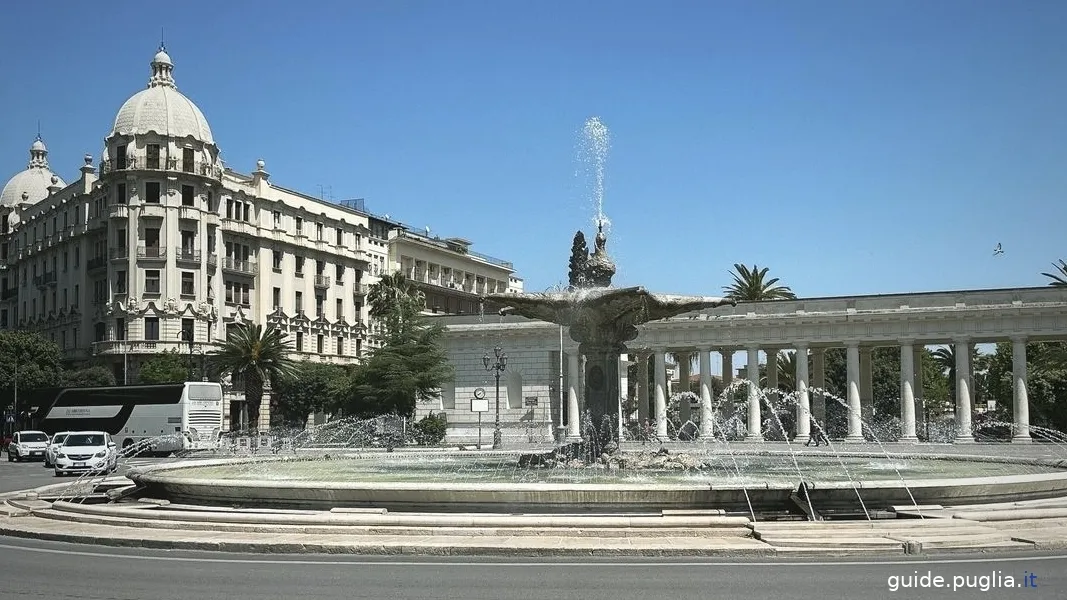
Piazza Cavour is one of the main squares in Foggia, located in the historic center of the city. This square is a vibrant meeting place and a location rich in history and architecture, offering numerous attractions and points of interest.
Here is what you can see in Piazza Cavour:
Palazzo de Santis
Dominating one corner of Piazza Cavour, Palazzo de Santis is an elegant example of Neoclassical architecture. The building, with its imposing facade and refined architectural details, reflects the grandeur of the era in which it was built. Today, it houses offices and commercial spaces but remains an important architectural landmark of the square.
Monument to Giuseppe Garibaldi
In the middle of the square stands the Monument to Giuseppe Garibaldi, dedicated to one of the fathers of Italian unification. This monument, which celebrates Garibaldi's contribution to the unity of Italy, is a focal point of the square and represents an important testament to national history. The statue and its base are characterized by artistic details that recall the Risorgimento era.
Palazzo Dogana
In Piazza Cavour is the Palazzo Dogana, an impressive historic building that once served as the customs house. The architecture of this palace is characterized by a sober and majestic style, with a wide facade and classical details. Palazzo Dogana is a notable example of how public architecture can reflect the grandeur and functionality of historical buildings in Foggia.
Events and Activities
Piazza Cavour often hosts public events, markets, and cultural manifestations. Throughout the year, the square hosts various activities that may include concerts, fairs, and local celebrations. These events enrich the life of the square and offer unique opportunities to experience Foggia's culture and traditions.
Palazzo della Dogana
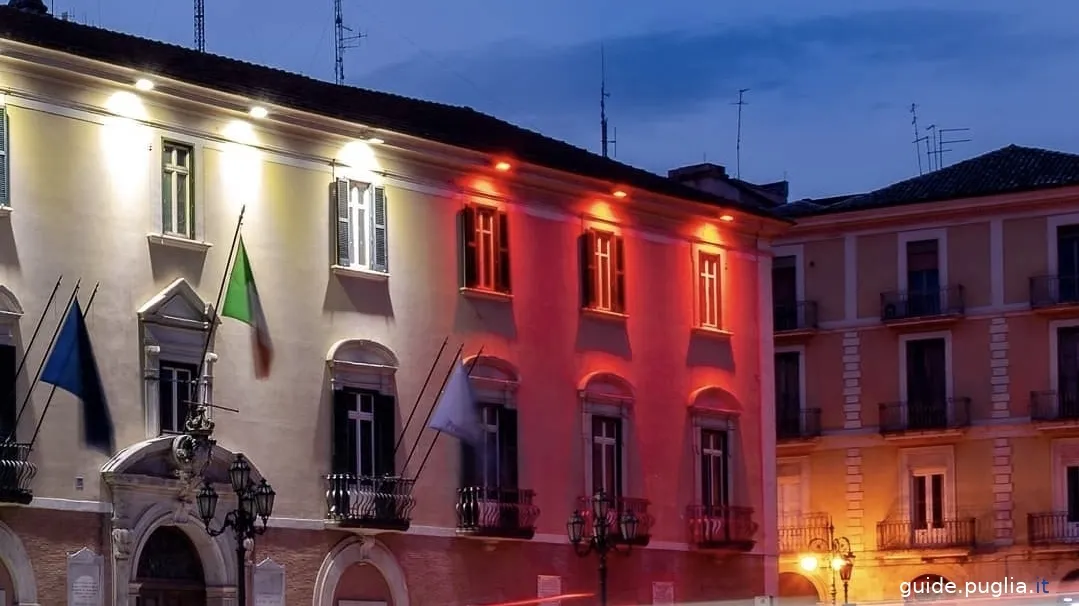
Palazzo della Dogana is located in the center of Foggia, in Piazza Cavour, one of the city's most historic and lively squares, adjacent to other architecturally and culturally significant buildings.
Historical and Architectural Importance
Originally built in the 18th century, the palace served as the customs office, responsible for managing duties and taxes on goods. In the past, the customs house was a crucial institution for the city's economy and regional trade.
The palace is a significant example of Neoclassical architecture, with an elegant and sober facade characterized by columns and decorative details that reflect the style of the era. The imposing and majestic structure is a symbol of the public function and economic importance that the palace held in Foggia's history.
Over the years, Palazzo della Dogana has undergone various renovation works to adapt it to new needs and to preserve its historical integrity. These efforts have helped maintain the building in good condition and preserved its historical and architectural value.
Visits and Accessibility
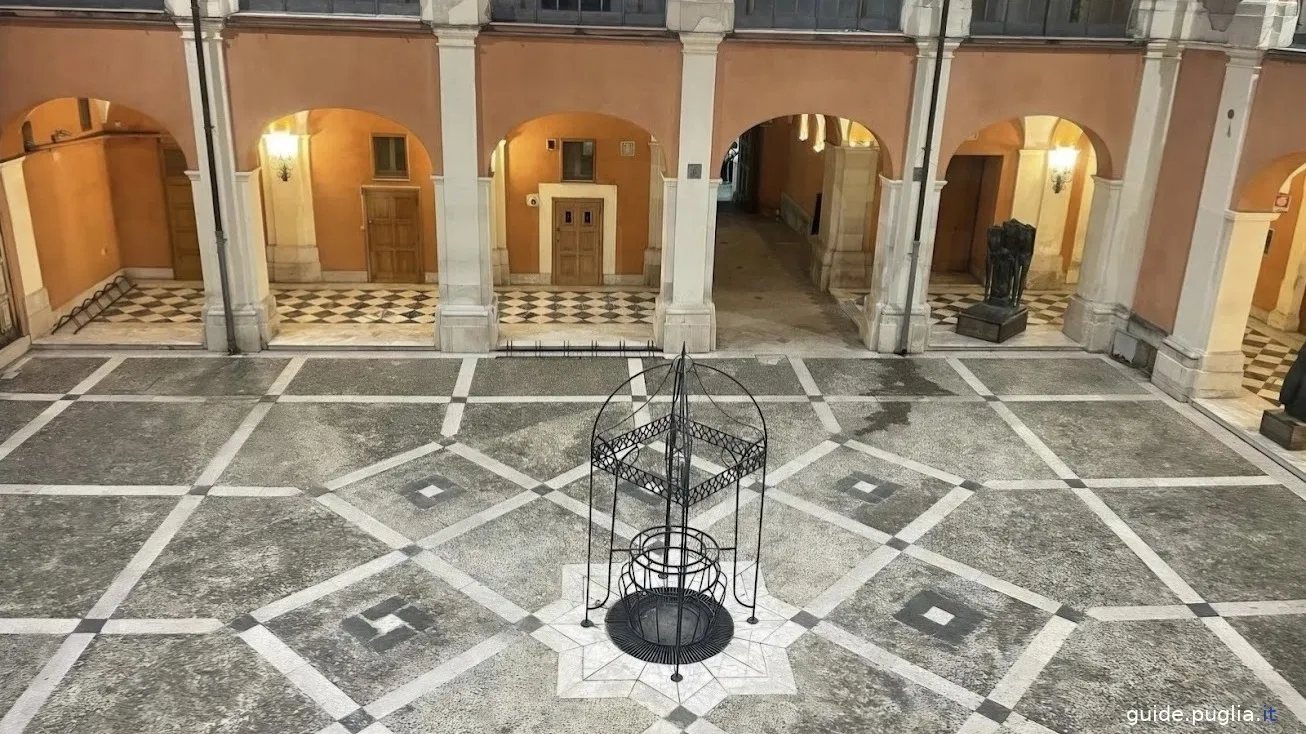
Currently, Palazzo della Dogana is generally not open to the public for individual visits, as it houses offices and administrative spaces. However, there are some ways to explore and learn more about this important building:
- Guided Tours: On special occasions, such as during cultural heritage days or city-organized events, guided tours or special openings may be offered. It is advisable to check with the Foggia tourist office or local authorities for information on any exceptional openings.
- Public Events: The palace may host public events or manifestations that allow visitors to get closer to its history and cultural context. Participating in these events can offer an opportunity to appreciate the palace's architecture and its role in the community.
- Exterior Observation: Even though the interior of the palace is not always accessible, it is possible to admire the architecture and external details of the building while strolling through Piazza Cavour. The facade and architectural elements can be appreciated from the outside.
Church of the Crosses
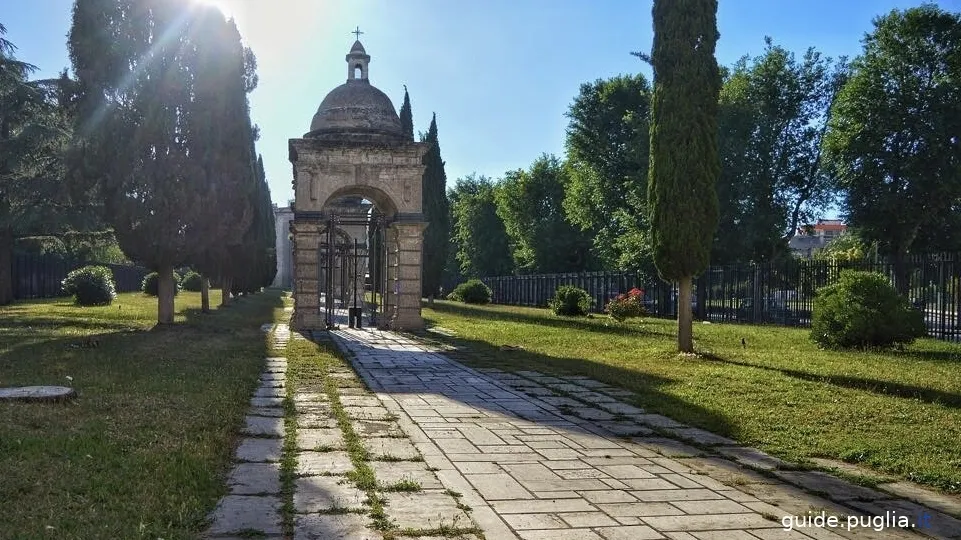
The Church of the Crosses represents one of Foggia’s historical treasures, with a tradition dating back to the medieval period. Located on Via delle Croci, one of the oldest and most charming streets in the historic center of Foggia, this church is a magnificent example of religious architecture that holds significant importance for the local community.
Its strategic location makes it easily reachable for those who wish to immerse themselves in the city's history, allowing visitors to explore other nearby attractions as well.
History and Architecture
The Church of the Crosses, with origins dating back to the 13th century, is a masterpiece of medieval architecture. Its design reflects the stylistic characteristics of the era, enriched over the centuries by interventions and renovations that have preserved its charm and historical value.
Every corner of the building tells its long history through the modifications and architectural updates that have contributed to maintaining its integrity and beauty over time.
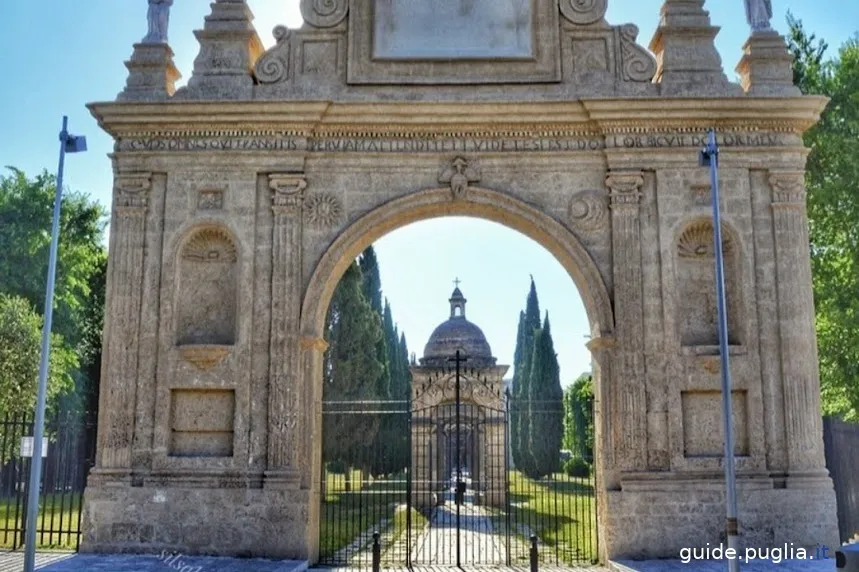
Architectural Features
- Facade: The church’s facade features simple yet elegant elements typical of medieval style. The main door is often adorned with decorative details reflecting the craftsmanship of the era.
- Interiors: Inside, the church features a single nave with side altars and decorations including sacred art. The walls may be adorned with frescoes or stuccoes depicting religious stories and biblical scenes.
- Apse: The apse of the church may showcase distinctive architectural elements such as semicircular arches and arched windows, which are typical of medieval churches.
Visits and Opening Hours
Historic churches like the Church of the Crosses usually have limited opening hours. They are often open during religious services, such as Mass, and may have specific hours for tourist visits.
For those interested in a guided tour, it may be possible to arrange tours on request or during special events.
Church of St. Thomas
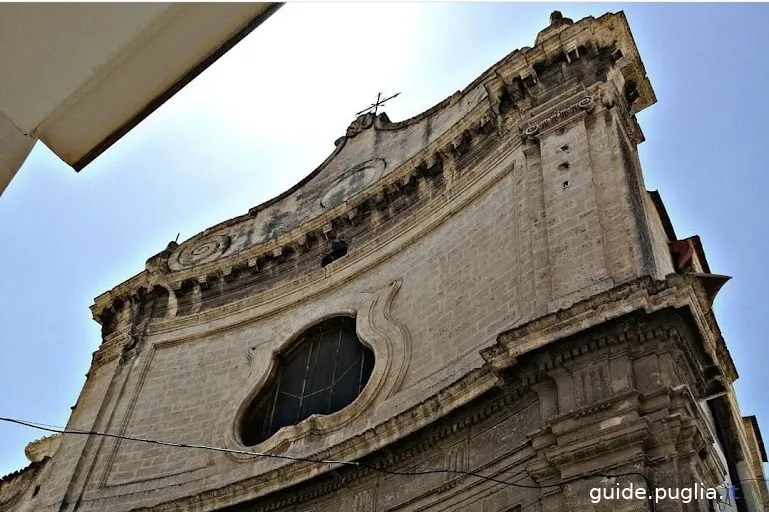
The Church of St. Thomas is one of the oldest places of worship in Foggia. It is considered the first Christian place of worship in the city and has a history dating back to the medieval period. The church is dedicated to St. Thomas the Apostle and represents an important testimony to the religiosity and religious history of Foggia.
Architectural Features
The church features an architecture that reflects the religious styles of the time of its construction. Although it has undergone modifications and restorations over the centuries, it retains elements of historical and artistic value.
The facade of the church is simple and austere, reflecting the religious architecture of the medieval period. You might notice Romanesque and Gothic elements that characterize the external design.
Inside, the church features elements of historical and artistic interest. You might find ancient frescoes, Baroque decorations, and sacred artworks. The interior architecture includes naves and chapels, with details reflecting the religious and artistic traditions of the time.
Visit
The Church of St. Thomas is open to the public during religious ceremonies and can also be visited to admire its architecture and historical significance. Opening hours and visiting procedures may vary, so it is advisable to check with the local parish.
Parco del Boschetto
Parco del Boschetto is a green space located in Foggia, known for its natural beauty and as a recreational and relaxing area for citizens and visitors. It provides a tranquil refuge from the hustle and bustle of the city, characterized by expansive green areas, trees, and paths that invite walking and relaxation.
Here are some details that might help you explore this park:
Park Features
Green Spaces: The park is characterized by large green spaces and well-maintained lawns. Tall trees and vegetation areas create a serene and natural atmosphere, ideal for walks, picnics, spending time with friends and family, or simply relaxing outdoors.
Trails and Paths: Within the park, there are several trails and paths winding through the vegetation, allowing pleasant walks and moments of tranquility immersed in nature, or jogging, offering a natural and peaceful environment away from city traffic.
Play Areas: Parco del Boschetto has several play areas for children and spaces dedicated to sports and recreational activities.
Relaxation Zones: There are numerous benches and resting areas where you can relax, read a book, or simply enjoy the beauty of the surrounding landscape.
Events and Activities: The park occasionally hosts community events and activities, such as outdoor concerts, markets, and local manifestations, which enrich the visitor experience and create a lively and engaging atmosphere.
Opening Hours and Access
Parco del Boschetto is generally open every day, from early morning until sunset. There is no entrance fee, and access is free for everyone.
Piazza Umberto Giordano
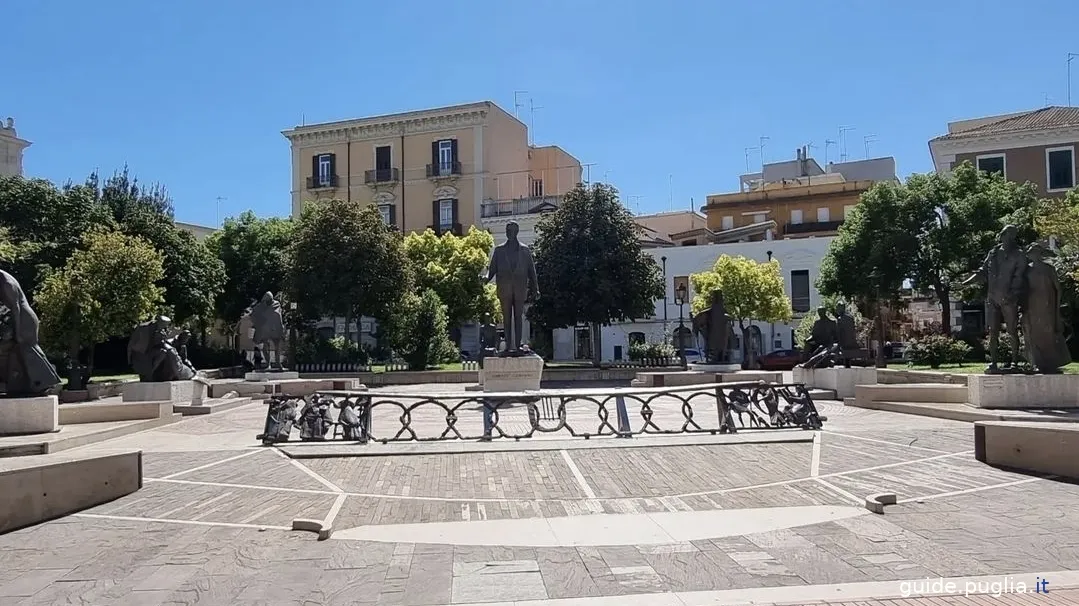
Piazza Umberto Giordano is one of the main squares in Foggia and represents an important central area of the city, both historically and culturally.
Piazza Umberto Giordano is easily accessible from the city center and well-connected to other points of interest. This square serves as a key hub for commercial, social, and cultural activities in the city.
The square is characterized by wide open spaces and a layout that allows a clear view of the surrounding buildings, including theaters, museums, and public structures that contribute to its relevance. The architecture of these buildings ranges from Neoclassical to modern, offering a varied and interesting panorama.
Piazza Umberto Giordano often hosts public events and manifestations, such as concerts, fairs, and local celebrations. Throughout the year, the square may host cultural activities, markets, and festivals that enliven the environment and offer opportunities for socialization and entertainment.
What to See in Piazza Giordano
Monument to Umberto Giordano

In the center of the square stands the Monument to Umberto Giordano, dedicated to the renowned composer and musician from Foggia. This monument is an important attraction and represents a tribute to Giordano's figure, celebrated for his contribution to music and culture.The monument features a statue of the composer and a base decorated with reliefs that recall his career and cultural impact.
Theater Umberto Giordano
The Teatro Umberto Giordano is one of the most emblematic buildings in Piazza Umberto Giordano. Built in 1894, the theater is an example of Neoclassical theatrical architecture and one of the main cultural centers in Foggia.With its elegant facade and refined architectural details, the theater hosts a wide range of events, including operas, concerts, theatrical performances, and cultural manifestations.
Palazzo del Governo
Palazzo del Governo is another important building located in Piazza Umberto Giordano. This historic building houses the offices of the Prefecture of Foggia and plays a fundamental role in local administration.The architecture of the palace reflects the elegance and functionality of early 20th-century public buildings, characterized by an imposing facade and decorative details that reflect the institutional importance of the structure.
Villa Comunale Karol Wojtyla
Villa Comunale Karol Wojtyla is a public park located in the center of Foggia and is dedicated to Pope John Paul II, whose original name was Karol Wojtyla. This dedication reflects the respect and admiration for the Pope, who had a significant impact on the Catholic Church and the global community.
Villa Comunale Karol Wojtyla is characterized by expansive green spaces, centuries-old trees, and well-maintained lawns. The park features walking paths, resting areas with benches, and picnic spaces. It is an ideal place for relaxing walks, outdoor activities, and moments of leisure.
One of the main monuments in the Villa Comunale is undoubtedly the statue dedicated to Pope John Paul II. The statue is an important landmark within the park and represents the city's tribute to a figure of great significance in the recent history of the Catholic Church.
Events and Fairs in Foggia
Foggia offers a rich calendar of events and fairs that reflect its vibrant culture and tradition.
Fiera di Foggia
The Fiera di Foggia is a major event for the city, representing a significant commercial and cultural manifestation. Originally conceived as an agricultural fair, it has now expanded to various sectors.
The fair features a wide range of exhibitions, from technological innovations and agricultural machinery to artisanal products and fashion. During the event, the streets and exhibition spaces come alive with food stands serving local and regional delicacies. The fair is also an opportunity to enjoy shows and concerts, turning the event into a lively and engaging celebration.
Periods: It generally takes place in the fall, but there may be other editions throughout the year.
Feast of St. John the Baptist
The Feast of St. John the Baptist is a deeply rooted celebration in Foggia's religious tradition. Every year, on June 24th, the city is festively decorated to honor the patron saint.
The celebration begins with a solemn procession through the main streets of the city, involving faithful and citizens in a demonstration of devotion and community. The procession is accompanied by religious chants and moments of prayer, creating an atmosphere of reflection and celebration.
The festivities continue with social and cultural events including communal meals and concerts.
Periods: It takes place every year on June 24th.
Foggia in Festa
"Foggia in Festa" is a summer festival that transforms the city into a stage for events and celebrations. During the summer months, Foggia comes alive with a series of events ranging from music and concerts to theatrical performances and family activities.
The streets and squares become meeting places where people can enjoy a variety of entertainments. The festival is an opportunity to enjoy the summer climate, participate in cultural events, and savor local cuisine. "Foggia in Festa" represents a time for relaxation and socialization, ideal for anyone wanting to experience the city in a festive and lively atmosphere.
Periods: It takes place during the summer months, usually from June to September.
Caciocavallo Festival
The Caciocavallo Festival is an event dedicated to one of the most characteristic dairy products of Puglia: caciocavallo. This festival celebrates the region's cheese-making tradition, offering a unique opportunity to discover and taste different varieties of caciocavallo.
The festival is a journey through the flavors and gastronomic traditions of the area, with stalls offering cheese tastings and demonstrations of its production. During the event, you can watch artisans at work and participate in moments of conviviality, tasting typical dishes and engaging in cultural events that celebrate Puglia's culinary tradition. This event is particularly appreciated by food lovers and those looking to explore local traditions more deeply.
Periods: It usually takes place in the fall or winter, but the date can vary.
Tomato Festival of Foggia
The Tomato Festival of Foggia celebrates one of the most emblematic ingredients of Puglian cuisine: the tomato. This event is a feast for the palate and the senses, with stalls offering a wide range of dishes prepared with local tomatoes. The festival is an excellent opportunity to discover the various uses of tomatoes in traditional cuisine, from sauces to pastes.
During the event, visitors can participate in culinary demonstrations and taste dishes made with fresh tomatoes. The festival is enriched with performances and entertainment that create a lively and welcoming atmosphere.
The Tomato Festival represents an important celebration of local gastronomic culture, combining food and festivity in an unmissable event for those who love cuisine and Puglian traditions.
Periods: It generally takes place in the summer.
International Short Film Festival
The International Short Film Festival of Foggia is an event dedicated to short cinema and attracts filmmakers from around the world. This festival provides a platform for screening innovative and creative short films from various nations and cultures.
The events include film screenings, discussions with directors, and award ceremonies that celebrate the best works in competition. The festival is an important opportunity to discover new trends in cinema and to meet industry professionals. Each year, the festival enriches the city with a series of cultural and intellectual events, attracting film enthusiasts and talented filmmakers.
Periods: It takes place annually in November.
Markets and Local Festivals
Foggia hosts numerous markets and local festivals that offer a great opportunity to discover artisanal products, gastronomy, and local traditions. Christmas markets, for example, are an opportunity to purchase gifts and Christmas decorations, while neighborhood festivals offer social and cultural events involving the whole community.
These events create a welcoming and festive atmosphere, making the streets and squares of Foggia lively and full of activity. Local festivals are the perfect chance to immerse yourself in community life and discover the authentic culture of the city.
Periods: Vary depending on the event, with Christmas markets typically in December and seasonal festivals throughout the year.
What to Do in Foggia
1. Explore Places of Worship
- Cathedral of Santa Maria Assunta: Visit this imposing church to admire the architecture that blends Romanesque and Gothic styles. Discover the historical and artistic details that characterize the cathedral and stroll around the surrounding square.
- Church of St. Thomas: Discover Foggia's first Christian place of worship, an important testament to the city's religious history.
- Church of the Crosses: Immerse yourself in the medieval history of the city by visiting this historic church located in the center of Foggia.
2. Discover Monuments and Museums
- Civic Museum of Foggia: Explore the museum's archaeological, historical, and artistic collections for an in-depth look at the history and culture of the region.
- Giordano Theater: Admire the architecture of this historic theater and, if possible, attend one of the performances to experience live cultural entertainment.
- Palazzo della Dogana: Visit this historic palace to admire its architecture and learn about its historical significance as a commercial and customs center.
3. Enjoy Nature and Relaxation
- Villa Comunale Karol Wojtyla: Stroll through this large park dedicated to Pope John Paul II. Enjoy the green areas, fountains, and monuments, and take advantage of the picnic spaces and playgrounds for children.
- Parco del Boschetto: Spend time outdoors in this urban park, which offers green areas, trails, and spaces for recreational activities.
4. Explore Foggia’s Squares
- Piazza Cavour: Admire the architecture of the historic buildings and enjoy the lively atmosphere of this central square, which serves as a meeting point for the community.
- Piazza Umberto Giordano: Discover the main historical and cultural buildings located in this square, including the Giordano Theater and other significant monuments.
5. Participate in Local Events
- Fiera di Foggia: If your stay coincides with this annual event, take the opportunity to explore exhibitions, attend events, and discover the latest in commerce and craftsmanship.
- Events and Festivals: Check the local calendar to discover festivals, concerts, and cultural manifestations taking place during your visit.
6. Outdoor Activities
- Hiking and Excursions: If you love nature, explore the surroundings of Foggia with walks or hikes in nearby parks and nature reserves.
- Trips to Nearby Areas: Consider visiting neighboring locations such as the Dauni Mountains, the Gargano National Park, or the Adriatic coast to explore further natural and cultural beauty.
What to See Near Foggia
- Monte Sant’Angelo
- San Giovanni Rotondo
- Parco Nazionale del Gargano e Foresta Umbra
- Isole Tremiti
- Mattinata
- Peschici
- Vieste
- Santuario della Madonna Incoronata di Foggia
- San Marco in Lamis
Monte Sant’Angelo
Monte Sant'Angelo is a must-visit destination located on the Gargano. This picturesque town is known for its well-preserved historic center and, above all, for the Sanctuary of San Michele Arcangelo.
This sanctuary, one of the most revered pilgrimage sites in Christianity, features impressive medieval architecture and a suggestive crypt. The winding streets and white houses of the historic center contribute to creating a charming and historical atmosphere.
San Giovanni Rotondo
San Giovanni Rotondo, known as the place of worship for Padre Pio, represents a site of great religious significance. Every year, thousands of pilgrims visit the Sanctuary of Padre Pio, an impressive complex that includes the Church of Santa Maria delle Grazie and the convent where Padre Pio lived and worked.
Gargano National Park and Foresta Umbra
The Gargano National Park is a protected area located in northern Puglia, offering a remarkable variety of natural landscapes, from the rugged coastline to the inland hills and mountains. Established in 1991, the park is one of the most important natural reserves in Southern Italy and hosts exceptional biodiversity, with numerous species of flora and fauna.
At the heart of the park is the Foresta Umbra, one of its main attractions. This vast forest area, covering about 15,000 hectares, is characterized by dense vegetation of beech, oak, and other tree species. Its name, meaning "shady forest," reflects the dense canopy that creates a cool and shaded environment. Ideal for hiking and walking, the forest offers well-marked trails and viewpoints that allow you to immerse yourself in nature and appreciate the unspoiled landscape.
Mattinata
Mattinata is a charming coastal town located on the Gargano coast. The name "Mattinata" derives from the Roman village of Matinum, which in the 1st century AD was near the current port. Mattinata's geographical location is notable: situated between two hills and surrounded by mountains, the town overlooks the Piana di Mattinata, a plain extending toward the Adriatic Sea.
This location gives it extraordinary natural beauty, characterized by a northern coast famous for its impressive white gypsum cliffs and numerous sea caves.
One of the major points of interest in the area is the Baia delle Zagare, known for its spectacular sea stacks. These rock formations, along with the gypsum cliffs, are a popular attraction for tourists and offer breathtaking landscapes.
Tremiti Islands
The Tremiti Islands, an archipelago located off the Gargano coast, represent a paradise for sea and nature lovers. The islands, including San Domino, San Nicola, Capraia, and Pianosa, offer crystal-clear waters, sea caves, and beautiful beaches.
San Domino is particularly known for its pine forests and lush landscapes, while San Nicola houses an ancient monastery and offers spectacular views. The islands are reachable by ferry from various coastal locations and represent an ideal escape from everyday life.
Peschici
Peschici, one of the pearls of the Gargano coast, is known for its characteristic historic center and spectacular beaches. The historic center of Peschici, with its white houses and narrow streets, offers a unique Mediterranean atmosphere.
Beaches, such as Marina di Peschici, are ideal for those seeking relaxation and natural beauty. The Peschici Castle, with its dominant position, offers a panoramic view of the city and the sea.
Vieste
Vieste, another famous seaside town on the Gargano coast, is renowned for its lively historic center and beautiful beaches. The historic center of Vieste is a maze of narrow streets and white houses that invite exploration.
The beaches of Vieste, such as Pizzomunno Beach, offer fine sand and crystal-clear waters. The sea stacks of Vieste, spectacular rock formations off the coast, are a natural attraction not to be missed.
Santuario della Madonna Incoronata di Foggia
The Santuario della Madonna Incoronata di Foggia is an important place of worship located a few kilometers from the city of Foggia in the Puglia region of Italy. This sanctuary is dedicated to the Madonna Incoronata, a revered image of the Virgin Mary that, according to tradition, was discovered in an ancient cave in 1000 AD and miraculously crowned.
The sanctuary is a significant pilgrimage center for the faithful who come to venerate the miraculous image and participate in the numerous religious celebrations held throughout the year. The church, characterized by majestic architecture and rich decorations, also houses a museum that preserves valuable works of art and historical objects related to the history of the sanctuary and local religious traditions.
San Marco in Lamis
San Marco in Lamis is a charming town located in the province of Foggia, in Puglia, Italy. Nestled in the heart of the Gargano National Park, this picturesque town is known for its peaceful atmosphere and historical traditions.
San Marco in Lamis is famous for the Monastero di San Matteo, which represents one of the most significant places of worship in the area and is home to a community of friars who welcome pilgrims and visitors. The town also offers well-preserved historical architecture, with ancient churches, lively squares, and characteristic streets.
Additionally, the municipality is surrounded by spectacular natural landscapes, including forests and hills of the Gargano, ideal for hiking and outdoor activities.
History of Foggia
Antiquity
The origins of Foggia are shrouded in legend, with archaeological evidence suggesting the presence of human settlements since the pre-Roman period. The first inhabitants of the area were likely Italic peoples, such as the Dauni, who left traces of their presence in the surrounding region.
During the Roman period, Foggia was known as "Focalia" or "Fucalia." The city was an important commercial and agricultural hub due to its strategic position in the Tavoliere delle Puglie plain, one of the most fertile areas in Italy. The region became a major center for agricultural production, known for its extensive wheat cultivation.
Medieval Period
In the medieval period, Foggia came under the control of the Byzantines and then the Lombards. During the Lombard rule, the city continued to prosper as a center of commerce and culture.
In the 11th century, Foggia was conquered by the Normans, who included it in their kingdom. The city became an important administrative and commercial center. Under the Swabian dynasty, during the reign of Frederick II of Swabia, Foggia continued to grow and flourish. Frederick II used the city as a starting point for his military campaigns in Sicily and southern Italy, and his administrative and legal reforms helped modernize the city.
With the fall of the Swabians, Foggia came under the rule of the Angevins and later the Aragonese. During this period, the city underwent numerous changes and conflicts, including the significant event of the 1731 earthquake that destroyed much of the medieval architecture.
Modern and Contemporary Era
In the 18th and 19th centuries, Foggia began to recover from the devastating earthquake. The new urban development led to the construction of modern buildings and infrastructure, contributing to a period of economic and social growth.
In the 20th century, Foggia faced significant challenges, including the damage of World War II and post-war reconstruction. The city adapted to the economic and social changes of modern Italy, becoming an important regional center for agriculture, industry, and services.
Today, Foggia is a lively city with a mix of ancient and modern history. It preserves numerous historical monuments, such as the Cathedral of Santa Maria Assunta and the Giordano Theater, and continues to be an important cultural and economic center of Puglia.
Conclusions
Foggia and its surroundings offer a variety of experiences ranging from rich historical and cultural heritage to extraordinary natural beauty. The city itself, with its vibrant history and architectural heritage, is an ideal starting point to explore one of Italy’s most fascinating regions.
